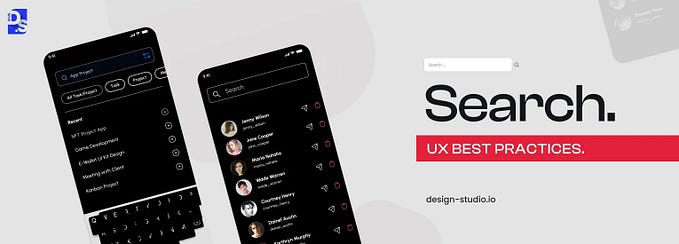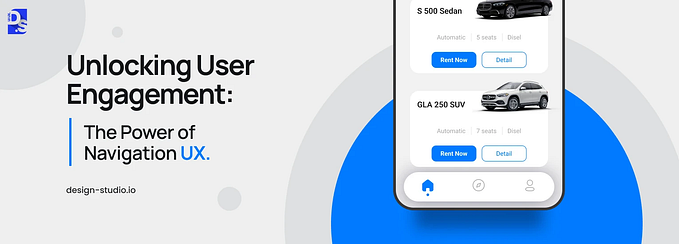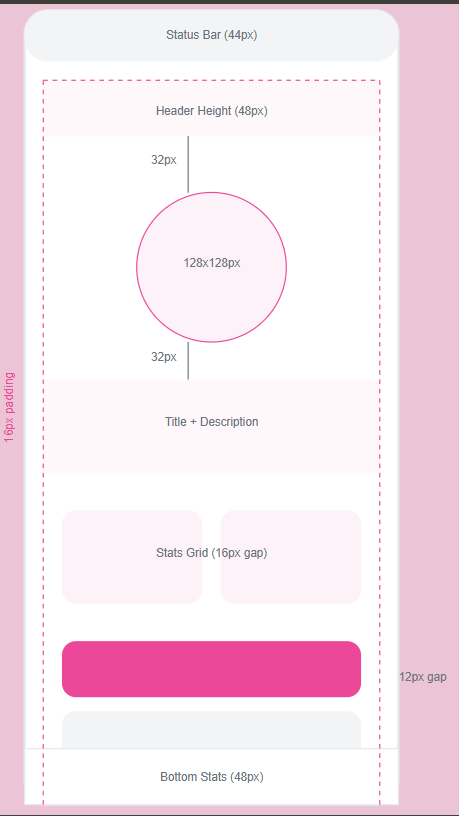Top UI/UX Design Trends to Watch in 2025

To create a digital product that users love and keep coming back to, you must perfect its User Interface (UI) and (User Experience). It may be a challenging task since the UI/UX design field is evolving at a breakneck speed. Every year, new technologies are being integrated into the field.
How users interact with digital interfaces and perceive digital experiences also keeps changing. What was “good UI/UX design” yesterday is completely different from what it will be tomorrow.
It would not be good to follow trends and get rid of old design practices just because they are seen by some as “old school”. Your job is to improve your product’s usability. But, there are some trends that you just cannot avoid.
We are talking about trends that:
- Actually improve a product’s usability, not just its visual appeal
- Most of your competitors are probably already investing in
- Attract huge demand from users
This article makes you familiar with 6 UI/UX design trends that are simply too important to avoid in 2025.
1. Motion Design
Motion Design is emerging as a pivotal trend in UI/UX design. As app + website users are getting more impatient by the day, designers are leveraging motion to capture their attention and enhance engagement.
Motion design includes animated screen transitions, animated scrolling, or interactive micro-interactions that guide users through their digital experience. This approach makes digital interfaces more visually appealing. It also improves usability by directing user focus to important features and content.
Why This Trend Matters
This trend is crucial because user attention spans are shrinking. Many users are also simply losing interest in sites and apps that feel ‘plain’.
Most users expect immediate gratification from digital experiences. Effective motion design can ‘hook’ users and keep them engaged longer
How to Apply This UI/UX Design Trend to Your Own Product
- Add small + fast-loading animations to button clicks, notifications, and other micro-interactions to provide immediate feedback.
- Create smooth transitions that enhance the browsing experience.
- Use 3D graphics that complement your content without overwhelming users.
PRO TIP: Do not use too many AI videos or animations in your app/website. In 2024, 43% of digital users reported seeing deep-fake videos on the Internet. These users are skeptical of AI-generated content and they may have trust issues with your brand in 2025 if you over-use AI.
Trend #2. The Resurgence of Design Writing
For a few years, we could generate high-quality paragraphs in seconds by giving AI tools basic text prompts. In 2025, with well-written text prompts, AI can create images, videos, and other visual design assets.
Designers are now being encouraged to articulate their ideas clearly before execution. They are also driven to use creativity to craft UX copy and move away from formulaic, AI-sounding text. Disconnected or fake-sounding copy hinders user experiences as users are tired of seeing AI-generated text on social media platforms. So, human-driven design writing is now being re-recognized as a vital component of the design process in 2025.
Why This Trend Matters
The demand for skilled UX writers is rising. Companies are willing to pay more for professionals who can create meaningful content that resonates with users. According to estimates, average salaries for UX designers in 2025 will be $108k, while UX writers will earn approximately $126k.
The trend highlights a reluctance among businesses to rely on AI for writing tasks. It also highlights the need for UI/UX design teams to recruit human UX writers who can boost user engagement and product relatability with their creative writing.
How to Apply This UI/UX Design Trend to Your Own Product
- Prioritize recruiting high-quality UX writers who can create relatable, human-sounding text that aligns with your design goals and enhances your product’s UX quality.
- Involve UX writers during the design phase to create cohesive content that complements visual elements.
- Craft messages that resonate with users on a personal level, fostering trust and engagement.
- Gather feedback from real users on your content to refine messaging and improve its style and informativeness.
Trend #3. Inclusivity + Accessibility Become Non-Negotiable
As we move into 2025, brands are expected to shift from tokenism to genuine representation. This means acknowledging and welcoming all aspects of human experience, including age, ability, and culture. Designers must create experiences that cater to diverse audiences. Inclusivity and accessibility must become every design team’s priority.
Why This Trend Matters
Brands that embrace inclusivity and accessibility can reach a broader audience. Inclusive design also helps businesses better comply with modern legal and corporate standards. Companies that prioritize accessibility can differentiate themselves in a competitive market and foster brand loyalty.
How to Apply This UI/UX Design Trend to Your Own Product
- Engage with diverse groups of users during UX research to understand their needs and preferences.
- Build a design team that reflects various backgrounds and abilities to ensure comprehensive insights.
- Implement voice search in your product’s design to allow users to navigate hands-free.
- Prioritizing mobile usability to make your designs more accessible.
- Include keyboard navigation, screen reader compatibility, and high-contrast modes to improve usability for all.
- Regularly test your designs with users from different demographics to identify areas for improvement.
Trend #4. Bento Box Design
The Bento Box design style is inspired by traditional Japanese bento lunchboxes. It organizes content into neat, grid-like compartments. Each section presents information clearly and attractively. This organization enhances both the content’s legibility and aesthetics.
The bento layout allows designers to guide users through long-form content seamlessly. It is especially helpful for modernizing websites where complex information needs to be broken into digestible parts.
Why This Trend Matters
The clean lines and structured layout of the Bento Box design style help create attractive digital interfaces that draw users in. Banto layouts adapt well to various screen sizes. Moreover, designers can highlight important information by organizing content into distinct sections. Younger users who watch Japanese anime will find Bento box design visually appealing
How to Apply This UI/UX Design Trend to Your Own Product
- Establish a structured grid layout for your content pages where each section serves as a compartment for different content types.
- Use varying cell sizes to emphasize important content and guide user attention.
- Choose which cell to fill with content to create dynamic patterns.
- Incorporate rounded corners in your design to enhance the Bento aesthetic and distinguish between sections.
- Position related elements close together to improve usability and coherence.
- Infuse your brand’s identity through colors, fonts, and images into each Bento box.
- Look for inspiration from sites like Atmosphere FM and Givingli that use custom Bento layouts.
Trend #5. Personalization
Users are increasingly seeking digital experiences that are tailored to their preferences. They appreciate features like location-based recommendations, browsing-history-based suggestions, and customized content displays. These personalized features help users filter through seas of content that is irrelevant to them and make them feel valued.
Why This Trend Matters
90% of users are willing to share their browsing data in return for more personalized experiences. Personalized UI/UX design has the potential to increase a product or brand’s revenue by 40%. As AI and machine learning technologies advance, the ability to provide hyper-personalized experiences is also becoming easier for brands
How to Apply This UI/UX Design Trend to Your Own Product
- Create mechanisms to analyze user behavior and tailor content recommendations accordingly
- Offer suggestions based on users’ geographical locations
- Allow users to set interaction preferences when browsing your app/site
Trend #6. More Experimentation, More Creativity
Design tools are becoming more accessible (e.g., cheaper alternatives to Adobe like Canva). So, more people are experimenting with designs.
The era of repetitive design styles is over. Designers are breaking away from conventional aesthetics and embracing experimentation. This shift is leading to a resurgence of bold colors and dynamic gradients reminiscent of retro styles from the 70s and 80s. These vibrant color schemes add personality to digital interfaces.
Why This Trend Matters
The push for creativity and experimentation is crucial in a crowded digital landscape. Users crave unique experiences that stand out from the generic content flooding the market. By embracing bold design choices, your brand can differentiate itself and capture user interest
How to Apply This UI/UX Design Trend to Your Own Product
- Allow your designers to explore unconventional ideas without strict adherence to templates
- Implement vibrant color palettes and gradients to create eye-catching designs that evoke nostalgia.
- Move away from traditional grid layouts and explore asymmetric designs or layered elements
- Use animations and interactive features that add movement and energy to static designs
Conclusion
In 2025, UI/UX design will focus on making products easy to use, accessible to everyone, and creative. Trends like motion design, personalized features, inclusive designs, and unique styles will shape digital experiences. By using new ideas and putting users first, designers can create products that are engaging, and trustworthy, and keep users returning.
Not sure which of these UI/UX design trends you feel comfortable investing in? Sign up for professional user experience consulting services. Get a realistic idea of how these trends will manifest when applied to your digital product set!








